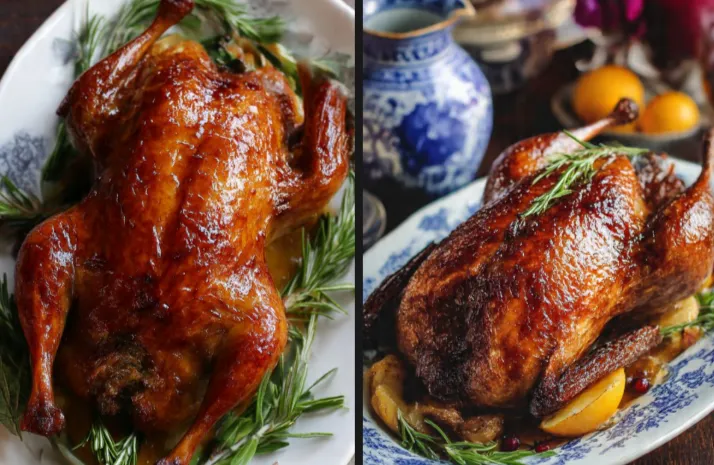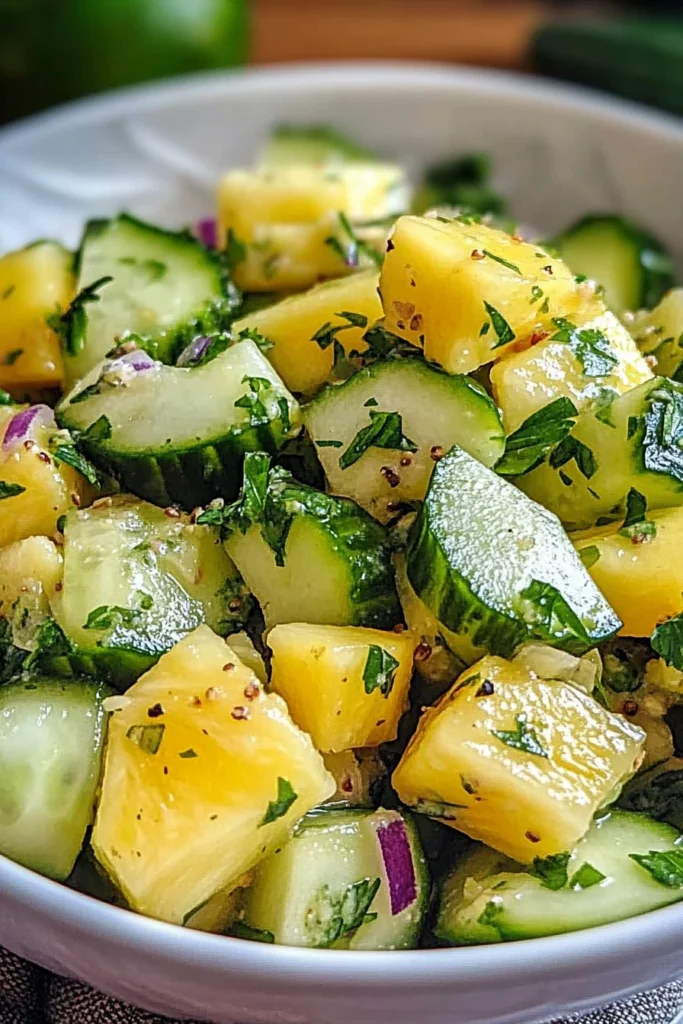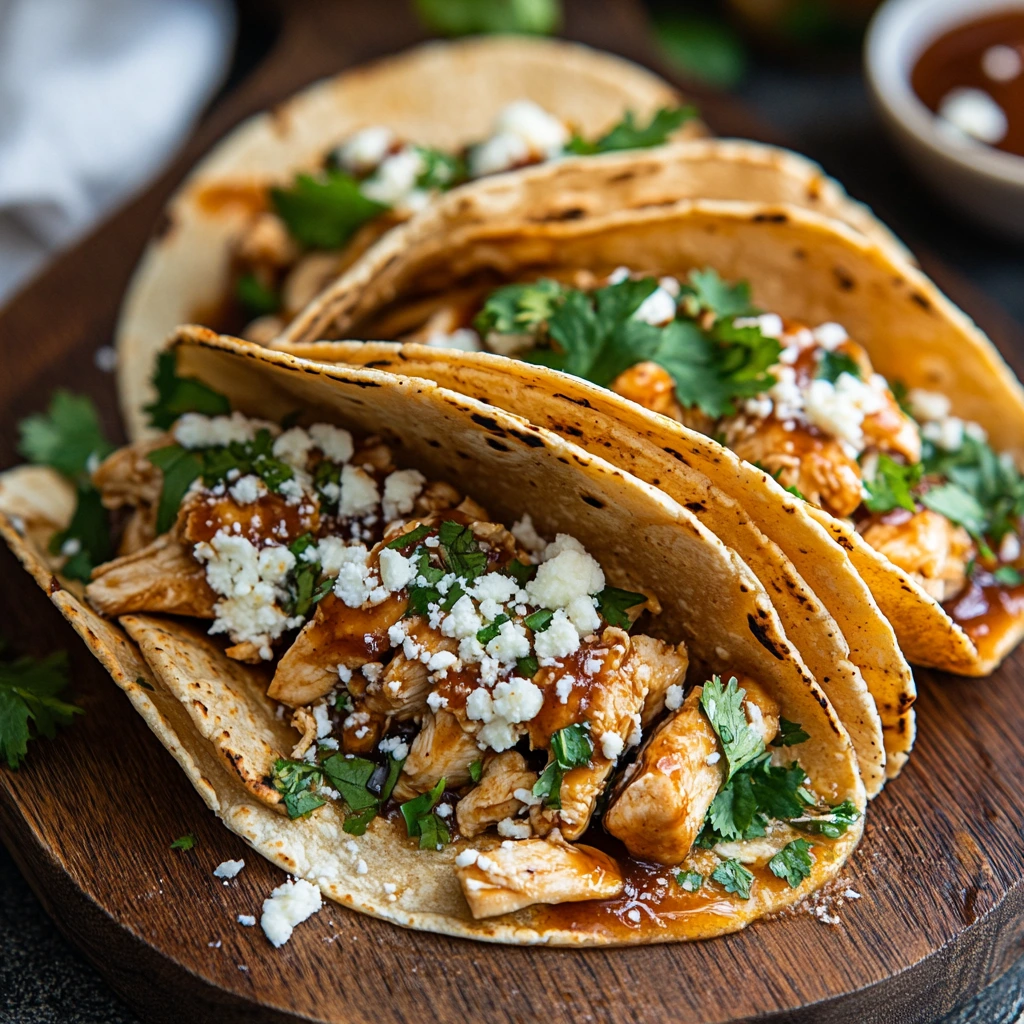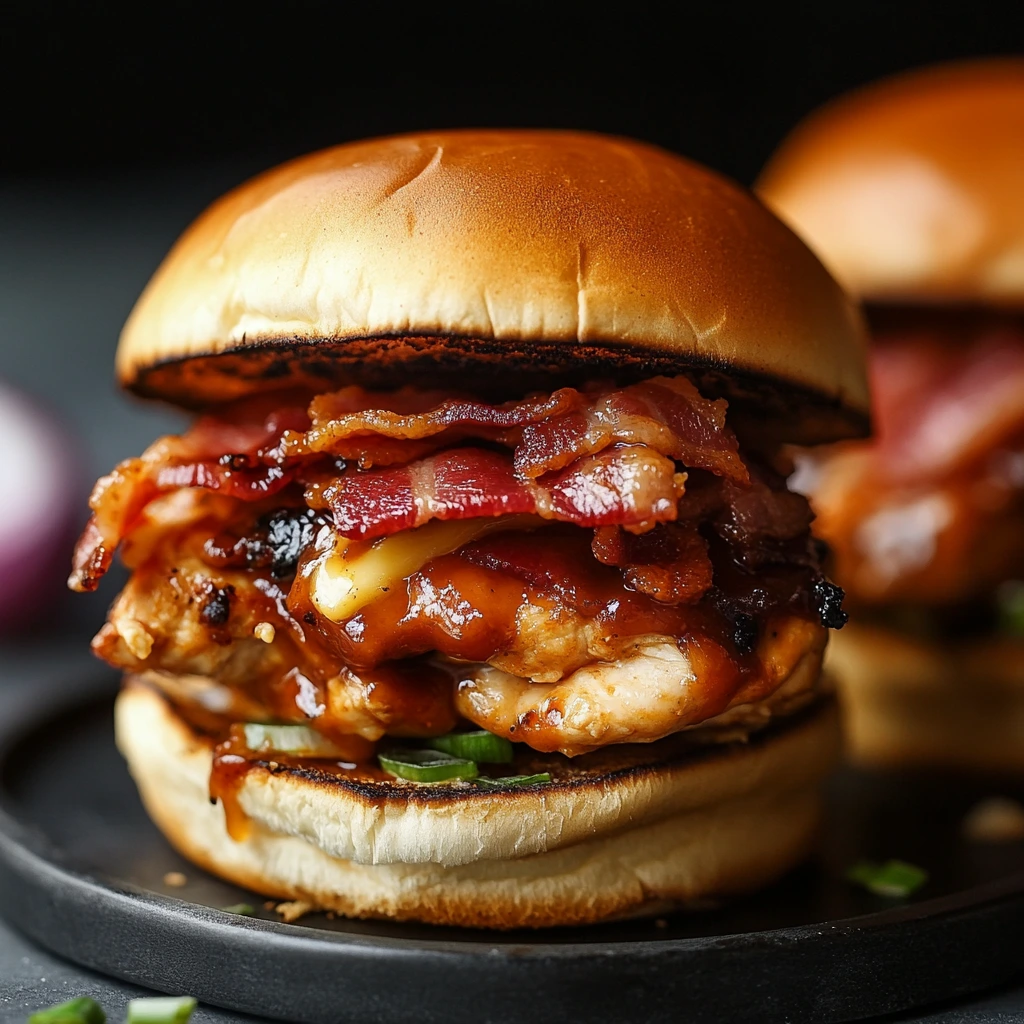Maple-glazed roast duck is a dish that combines the richness of duck with the sweetness of maple syrup and the depth of aromatic spices. The result is a beautifully roasted bird with crisp, golden skin and tender, flavorful meat. The glaze caramelizes as it roasts, creating a glossy finish that’s both elegant and irresistible. Perfect for festive occasions or intimate dinners, this recipe transforms a classic roast into a gourmet experience.
The Essence of Maple-Glazed Roast Duck
Duck is known for its rich, flavorful meat and naturally crisp skin when roasted properly. The addition of a maple glaze enhances its savory depth with a touch of sweetness, creating a perfect balance of flavors. The glaze, made with maple syrup, soy sauce, garlic, and citrus, forms a lacquered coating that seals in moisture and adds a subtle caramel note.
This dish is both rustic and refined — a centerpiece that feels luxurious yet comforting.
Why Maple-Glazed Roast Duck Is So Special
Unlike chicken or turkey, duck has a higher fat content, which renders during roasting to create incredibly crisp skin and succulent meat. The maple glaze elevates the dish with a sweet-savory complexity that pairs beautifully with the duck’s richness. The combination of maple syrup, soy sauce, and citrus creates a glaze that’s glossy, aromatic, and deeply flavorful.
It’s a dish that feels festive and indulgent, yet surprisingly simple to prepare.
Ingredients and Their Roles
Whole duck: The star of the dish, rich and flavorful.
Maple syrup: Adds sweetness and helps create a caramelized glaze.
Soy sauce: Balances the sweetness with umami depth.
Garlic and ginger: Add warmth and aromatic complexity.
Orange juice and zest: Provide brightness and acidity.
Rice vinegar or apple cider vinegar: Cuts through the richness of the duck.
Salt and pepper: Essential for seasoning and crisping the skin.
Step-by-Step Recipe for Maple-Glazed Roast Duck
Ingredients
- 1 whole duck (about 2.5–3 kg / 5–6 lbs)
- 1/3 cup pure maple syrup
- 2 tablespoons soy sauce
- 2 tablespoons orange juice
- 1 tablespoon orange zest
- 2 cloves garlic, minced
- 1 tablespoon fresh ginger, grated
- 1 tablespoon rice vinegar or apple cider vinegar
- 1 teaspoon salt
- 1/2 teaspoon black pepper
Preparation
1. Prepare the duck
- Remove the duck from the refrigerator and let it sit at room temperature for 30 minutes.
- Remove any giblets from the cavity and pat the duck dry with paper towels.
- Trim excess fat from the neck and cavity area.
- Using a sharp knife or skewer, prick the skin all over (especially around the thighs and breast) without piercing the meat. This allows the fat to render and the skin to crisp.
- Season the duck generously with salt and pepper, both inside and out.
2. Make the maple glaze
- In a small saucepan, combine maple syrup, soy sauce, orange juice, orange zest, garlic, ginger, and vinegar.
- Bring to a simmer over medium heat and cook for 5–7 minutes until slightly thickened.
- Set aside to cool slightly.
3. Roast the duck
- Preheat the oven to 190°C (375°F).
- Place the duck breast-side up on a rack in a roasting pan.
- Roast for 1 hour, then carefully drain the rendered fat from the pan (reserve it for cooking potatoes or vegetables).
- Brush the duck with the maple glaze and return to the oven.
- Continue roasting for another 45–60 minutes, basting every 15 minutes with more glaze, until the skin is deep golden and crisp.
- The internal temperature should reach 74°C (165°F) in the thickest part of the thigh.
4. Rest and serve
- Remove the duck from the oven and let it rest for 15–20 minutes before carving.
- Carve into portions and drizzle with any remaining glaze.
Tips for Perfect Maple-Glazed Roast Duck
- Dry the skin thoroughly: Moisture prevents crisping.
- Prick the skin carefully: Helps render fat evenly.
- Roast on a rack: Allows fat to drip away and promotes even browning.
- Baste frequently: Builds up a glossy, flavorful glaze.
- Let rest before carving: Keeps the meat juicy.
Variations to Try
Spicy Maple-Glazed Duck
Add 1 teaspoon of chili flakes or sriracha to the glaze for a sweet-spicy kick.
Maple-Balsamic Duck
Replace vinegar with balsamic vinegar for a deeper, tangier flavor.
Maple-Mustard Duck
Whisk 1 tablespoon of Dijon mustard into the glaze for a savory twist.
Maple-Apple Glazed Duck
Add 1/4 cup of apple cider to the glaze for a fruity, autumnal flavor.
Maple-Ginger Orange Duck
Increase the ginger and orange zest for a brighter, more aromatic version.
Serving Suggestions
Maple-glazed roast duck pairs beautifully with roasted root vegetables, wild rice, or mashed sweet potatoes. For a lighter option, serve with a citrus salad or steamed green beans.
For a festive presentation, garnish the platter with orange slices, fresh thyme, and a drizzle of glaze. The golden skin and glossy finish make it a stunning centerpiece.
Storage and Make-Ahead Tips
- Make-ahead glaze: Prepare the glaze up to 3 days in advance and refrigerate.
- Leftovers: Store in an airtight container in the refrigerator for up to 3 days.
- Reheating: Warm in a 160°C (325°F) oven until heated through and skin is crisp again.
- Duck fat: Save the rendered fat for roasting potatoes or vegetables — it adds incredible flavor.
Nutritional Information (per serving)
- Calories: 480–520 kcal
- Protein: 35 g
- Fat: 30 g
- Carbohydrates: 15 g
- Sugar: 12 g
The History and Inspiration Behind Roast Duck
Roast duck has been a delicacy for centuries, celebrated in cuisines around the world — from French canard à l’orange to Chinese Peking duck. The maple-glazed version draws inspiration from North American flavors, combining the natural sweetness of maple syrup with the savory depth of soy sauce and the brightness of citrus.
This fusion of flavors creates a dish that’s both familiar and unique — a modern twist on a timeless classic.
The Texture and Flavor Profile
The perfect maple-glazed roast duck has crisp, golden skin that shatters with each bite, revealing tender, juicy meat beneath. The glaze adds a glossy sheen and a balance of sweet, salty, and tangy notes. The rendered fat bastes the meat as it cooks, ensuring every bite is rich and flavorful.
Each mouthful offers a contrast of textures — the crunch of the skin, the succulence of the meat, and the sticky sweetness of the glaze.
Troubleshooting Common Issues
Soggy skin: Ensure the duck is thoroughly dried before roasting and roast uncovered.
Too much fat: Drain the pan periodically during roasting.
Burnt glaze: Apply the glaze during the last hour of roasting to prevent over-caramelization.
Dry meat: Don’t overcook; use a thermometer for accuracy.
Chef’s Tips for Professional Results
- Score the skin in a crosshatch pattern: Helps render fat evenly.
- Use pure maple syrup: Artificial syrups lack depth and caramelization.
- Roast in stages: Start at a moderate temperature, then increase heat at the end for crispness.
- Rest before carving: Keeps juices inside the meat.
- Serve with acidity: A citrus or vinegar-based side balances the richness.
Pairing Ideas
- With Beverages: Pair with Pinot Noir, Zinfandel, or a dry Riesling.
- With Sides: Serve with roasted parsnips, wild rice pilaf, or sautéed Brussels sprouts.
- With Sauces: Complement with orange reduction, cranberry compote, or balsamic glaze.
The Joy of Roasting Duck
Roasting a duck is a sensory experience — the aroma of maple and garlic filling the kitchen, the sound of fat sizzling, and the sight of golden skin crisping in the oven. It’s a dish that feels both comforting and celebratory, perfect for sharing with loved ones.
The process is simple but rewarding, turning a humble bird into a gourmet masterpiece.
The Science Behind a Perfect Roast Duck
Duck fat renders slowly during roasting, basting the meat and crisping the skin. Pricking the skin allows the fat to escape, while the glaze caramelizes on the surface, forming a flavorful crust. The balance of sugar, acid, and salt in the glaze ensures that the flavor is complex and well-rounded.
Resting the duck after roasting allows the juices to redistribute, ensuring moist, tender meat.
Presentation and Garnishing
For an elegant presentation, carve the duck and arrange the pieces on a platter. Drizzle with extra glaze and garnish with orange slices, thyme sprigs, or pomegranate seeds for color. Serve with a small bowl of glaze on the side for dipping.
The Perfect Holiday Centerpiece
Maple-glazed roast duck is a dish that commands attention — golden, glossy, and aromatic. It’s perfect for festive gatherings, offering a sophisticated alternative to turkey or ham. The combination of sweet maple, savory soy, and bright citrus creates a flavor profile that’s both comforting and refined.
Conclusion
Maple-glazed roast duck is the perfect blend of crisp skin, tender meat, and sweet-savory glaze. With its golden finish and rich aroma, it’s a dish that transforms any meal into a celebration. The maple syrup adds warmth and depth, while the citrus and soy balance the richness of the duck.
Whether served for a holiday feast or a special dinner, this recipe delivers elegance, flavor, and satisfaction in every bite — a true masterpiece of modern roasting.







